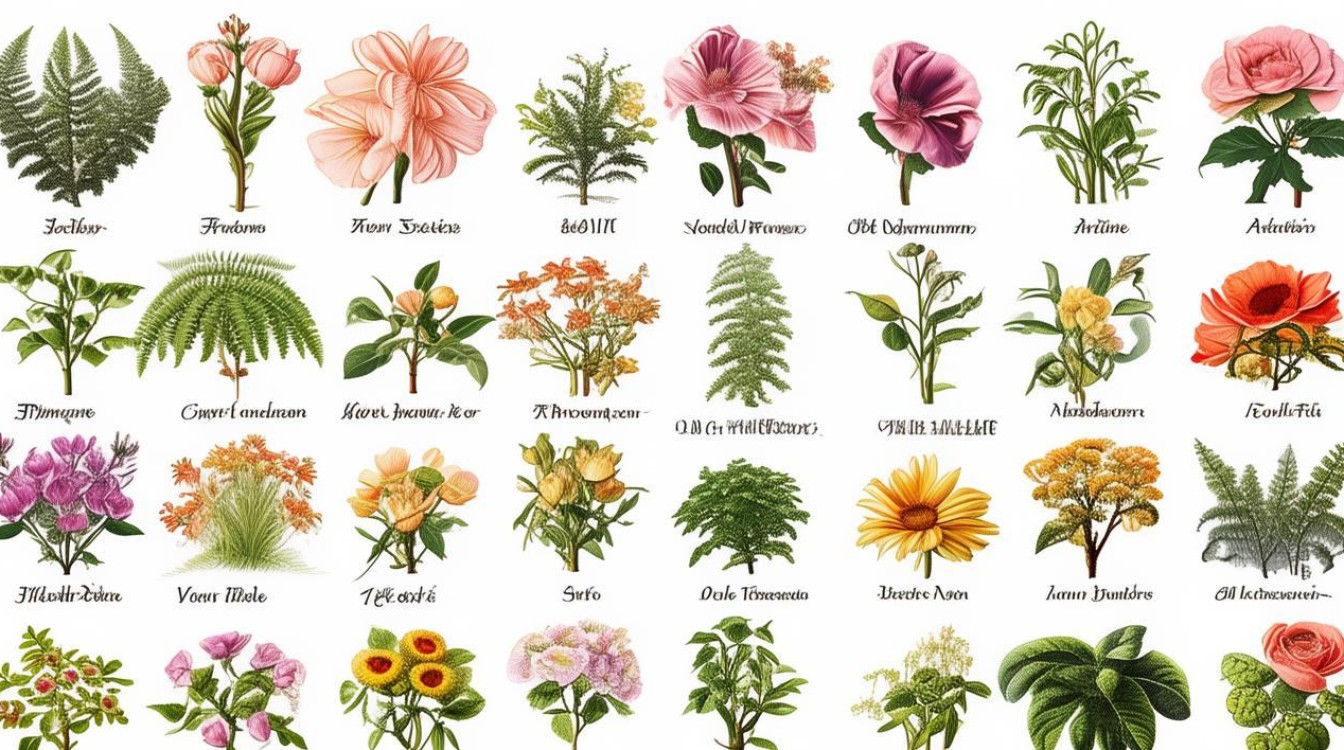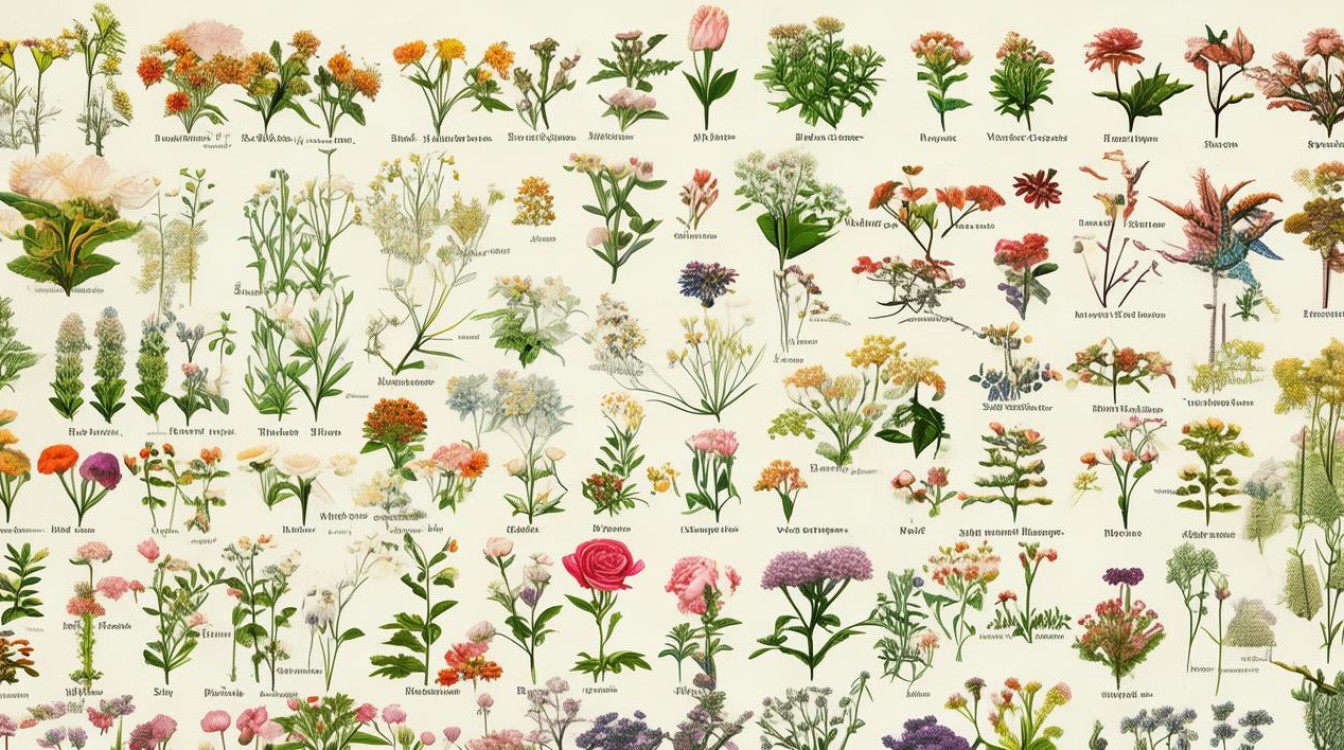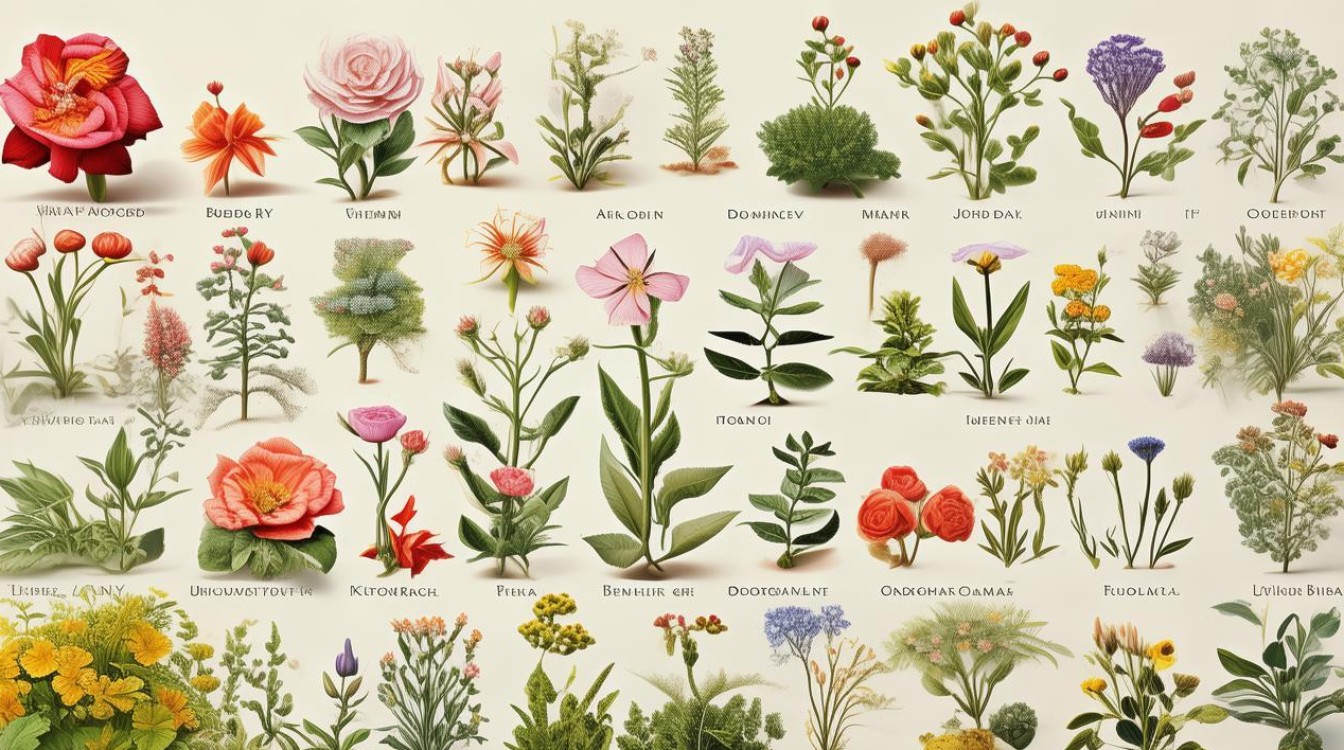Flowers and plants bring beauty to our lives, and knowing their English names can enhance gardening, travel, or even casual conversations. Whether you're a nature enthusiast, a student, or simply curious, this guide covers a wide range of floral vocabulary to help you expand your knowledge.

Popular Garden Flowers
- Rose (Rosa) – A classic symbol of love, available in countless colors.
- Tulip (Tulipa) – Known for its cup-shaped blooms, common in spring gardens.
- Daisy (Bellis perennis) – Simple yet cheerful with white petals and a yellow center.
- Sunflower (Helianthus) – Tall and bright, following the sun’s movement.
- Lily (Lilium) – Elegant and fragrant, often used in bouquets.
- Orchid (Orchidaceae) – Exotic and diverse, with intricate petal structures.
- Peony (Paeonia) – Large, lush blooms popular in weddings.
- Hydrangea (Hydrangea) – Clustered flowers that change color based on soil pH.
- Lavender (Lavandula) – Purple spikes with a soothing fragrance.
- Iris (Iris) – Distinctive sword-shaped leaves and vibrant hues.
Wildflowers and Meadow Plants
- Poppy (Papaver) – Bright red petals, often associated with remembrance.
- Bluebell (Hyacinthoides non-scripta) – Delicate, bell-shaped flowers in woodlands.
- Buttercup (Ranunculus) – Small yellow flowers with glossy petals.
- Foxglove (Digitalis) – Tall spikes with tubular blooms, attracting bees.
- Clover (Trifolium) – Three-leafed plants, with rare four-leaf varieties considered lucky.
- Dandelion (Taraxacum officinale) – Bright yellow flowers turning into fluffy seed heads.
- Cornflower (Centaurea cyanus) – Vibrant blue petals, once common in grain fields.
- Forget-me-not (Myosotis) – Tiny blue flowers symbolizing remembrance.
- Meadowsweet (Filipendula ulmaria) – Creamy white clusters with a sweet scent.
- Thistle (Cirsium) – Spiky purple flowers, Scotland’s national emblem.
Houseplants and Indoor Greenery
- Snake Plant (Sansevieria) – Hardy, upright leaves that purify air.
- Monstera (Monstera deliciosa) – Large, split leaves, a trendy indoor choice.
- Peace Lily (Spathiphyllum) – Glossy leaves with white spathe flowers.
- Spider Plant (Chlorophytum comosum) – Long, arching leaves with baby plantlets.
- Aloe Vera (Aloe barbadensis) – Succulent with soothing gel inside its leaves.
- Rubber Plant (Ficus elastica) – Thick, dark green leaves, easy to maintain.
- ZZ Plant (Zamioculcas zamiifolia) – Shiny, waxy leaves, highly drought-tolerant.
- Pothos (Epipremnum aureum) – Trailing vines, ideal for hanging baskets.
- Fiddle Leaf Fig (Ficus lyrata) – Large, violin-shaped leaves, a decor favorite.
- Chinese Money Plant (Pilea peperomioides) – Round, coin-like leaves on slender stems.
Herbs and Edible Plants
- Basil (Ocimum basilicum) – Aromatic leaves used in Italian and Thai cuisine.
- Mint (Mentha) – Refreshing flavor, great for teas and desserts.
- Rosemary (Rosmarinus officinalis) – Woody herb with needle-like leaves.
- Thyme (Thymus vulgaris) – Tiny leaves packed with earthy flavor.
- Parsley (Petroselinum crispum) – Mild, versatile herb for garnishing.
- Cilantro (Coriandrum sativum) – Also called coriander, used in salsas and curries.
- Oregano (Origanum vulgare) – Essential in Mediterranean dishes.
- Sage (Salvia officinalis) – Soft, gray-green leaves with a peppery taste.
- Dill (Anethum graveolens) – Feathery leaves, common in pickling.
- Chives (Allium schoenoprasum) – Thin, onion-flavored stems for salads and dips.
Trees and Shrubs with Notable Flowers
- Cherry Blossom (Prunus serrulata) – Pink or white flowers, celebrated in spring.
- Magnolia (Magnolia grandiflora) – Large, fragrant blooms in white or pink.
- Jasmine (Jasminum) – Sweet-smelling white or yellow flowers.
- Hibiscus (Hibiscus rosa-sinensis) – Tropical blooms in red, pink, or yellow.
- Wisteria (Wisteria sinensis) – Cascading purple or white flower clusters.
- Azalea (Rhododendron) – Bright spring flowers in various shades.
- Camellia (Camellia japonica) – Glossy leaves with rose-like flowers.
- Bougainvillea (Bougainvillea) – Vibrant papery bracts in pink, purple, or orange.
- Forsythia (Forsythia) – Early yellow blooms signaling spring.
- Dogwood (Cornus florida) – White or pink flowers, popular in landscaping.
Cacti and Succulents
- Barrel Cactus (Ferocactus) – Round, ribbed shape with sharp spines.
- Prickly Pear (Opuntia) – Flat pads with edible fruit.
- Aloe Vera (Aloe barbadensis) – Known for its healing gel.
- Echeveria (Echeveria) – Rosette-shaped succulents in pastel hues.
- String of Pearls (Senecio rowleyanus) – Trailing stems with bead-like leaves.
- Haworthia (Haworthia) – Small, striped succulents resembling aloe.
- Christmas Cactus (Schlumbergera) – Blooms in winter with pink or red flowers.
- Agave (Agave americana) – Large, spiky leaves used in tequila production.
- Lithops (Lithops) – Also called "living stones" due to their rock-like appearance.
- Sedum (Sedum) – Drought-tolerant ground cover with star-shaped flowers.
Flowers in Different Colors
- Red: Rose, Poppy, Geranium
- Pink: Peony, Cherry Blossom, Carnation
- Yellow: Sunflower, Daffodil, Marigold
- Blue: Cornflower, Forget-me-not, Hydrangea (in acidic soil)
- Purple: Lavender, Iris, Lilac
- White: Lily of the Valley, Daisy, Gardenia
Understanding these names not only helps in gardening but also enriches language skills. Whether you're reading botanical guides, traveling, or simply admiring nature, recognizing these terms makes the experience more engaging.

Exploring the world of plants through their English names opens up new ways to appreciate their diversity. From delicate wildflowers to towering trees, each species has a unique identity worth knowing.



